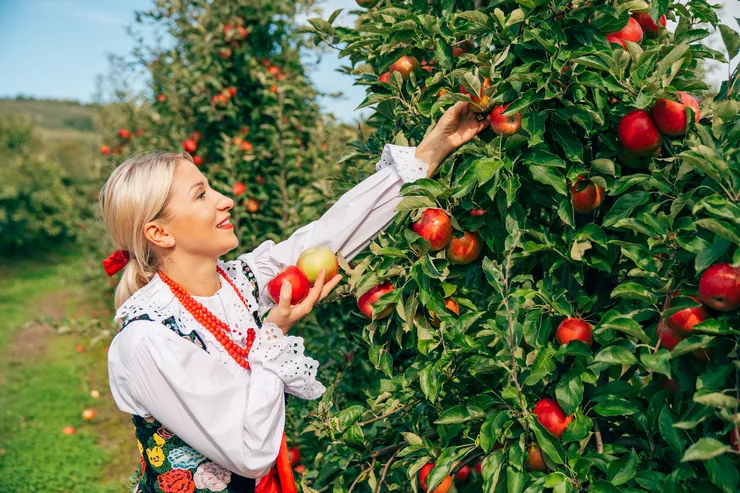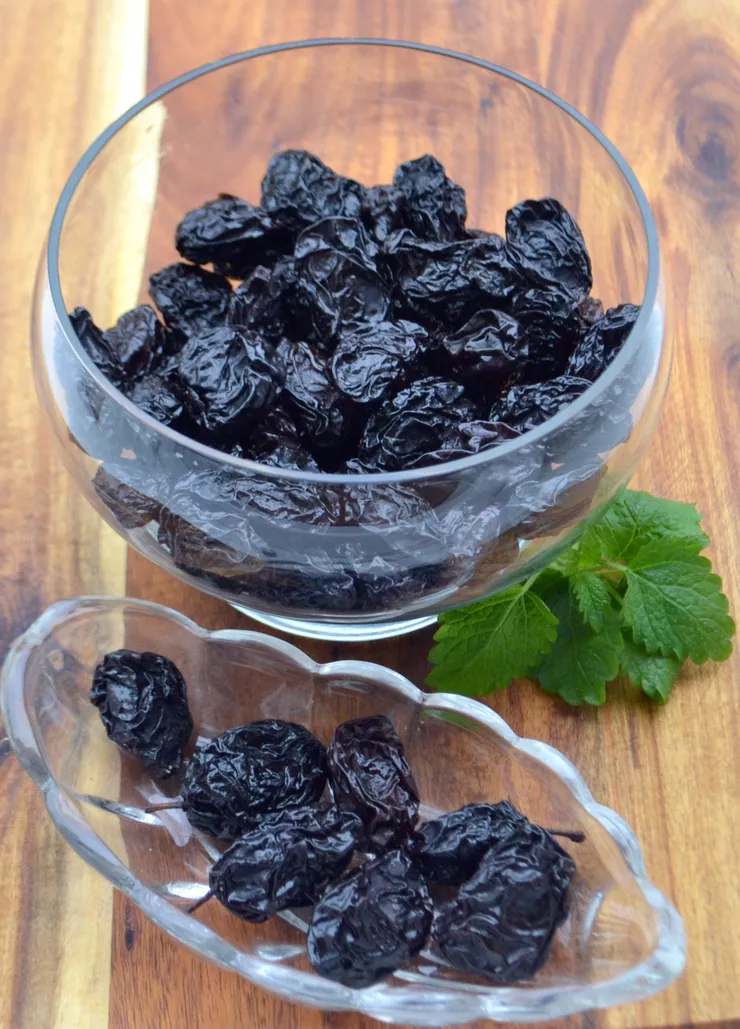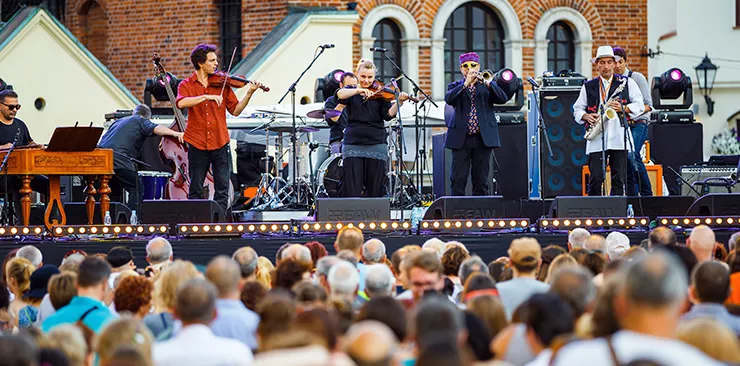





Magic fruit and where to find it.
Gardens have been the devil’s favourite haunt for temptations since the beginning of days, should The Bible and Good Omens be given credence, and he only used the choicest fruit. Should we acknowledge that Old Nick has switched from the ripest apples to the juiciest plums, he’s quite likely continuing his mission in the gardens of paradise taking up the slopes of Małopolska’s rolling hills. Quite likely around Łącko.

Małopolska boasts several pockets of an especially warm climate conducive to fruit growing and harvesting, and the area around Tarnów is the country’s warmest. One such pocket extends around Raciechowice by the Dobczyce Reservoir, where the rare mix of soil, air humidity, sun, and horticultural care makes not only locals but also consumers from distant places believe that Raciechowice apples have the “reddest cheeks”, much rosier than those from other regions.
Yet how could the delicious fruit of Małopolska orchards have travelled far in the days before motorways and refrigerators? The obvious answer is by sending them dried. Prunes, that is dried plums have travelled up the Vistula River to Gdańsk and further into the wide world.
The tradition of drying plums continues, and the locations where they are smoked into prunes in the natural organic manner are plenty. The oldest suśnie, that is plum drying sheds in Łukowica, are over a century old and still stand far away from the cottages as they used to be a major fire hazard in the past. Another plum hotbed is Sechna (and the nearby Iwkowa and Laskowa), whose name is likely derived from the local dialectal word for “is drying”. The Suska Sechlońska owes its slightly sweet taste and a smoky aroma to beech wood used in the suśnie, and its PGI (protected geographical indication) indication to being made in Sechna.
There is, however, another local plum product whose fame greatly outshines that of prunes. Śliwowica, sometimes anglicised to Slivovitz, is certainly the most famous devil’s brew in Poland, and the best-known and much-loved variety comes from Łącko, which unsurprisingly results in the moonshine’s name: Śliwowica Łącka. Its ancient recipe has been perfected so that it never causes hangovers, and the alcohol content ranges from 60 to 90%. Sadly, its production and sales remain illegal, which means that it can officially only be tasted during the annual Fruit Harvest Festival in Łącko, a festivity that obviously draws crowds and enjoys great popularity. For unofficial information, let the Internet be your guide. One of the useful, though official, links comes here.
There is a century-old story concerning the unofficial Śliwowica Łącka production. Just after the First World War, a British soldier armed with the arcane knowledge gleaned from his brothers-in-arms once ventured to Łącko and wanted to buy some śliwowica. Afraid of imitations causing horrible morning-after syndromes, he was keen to buy the real thing at the source. Knowing it was illegal, he was quite hesitant when he asked a local where he could buy some. To his surprise, the man pointed his finger at a cemetery wall. “No, no, you misunderstood me! I wanted sli-vo-vitz. Vod-ka. Al-co-hol.” The local only nodded his head and said very slowly, “That, my good sir, is a ce-me-te-ry. Perhaps the only place you should not try.” Other versions of the story name a police station and a synagogue in place of the cemetery.
In the spirit of what other nations believe about Poles, we can spice liqueurs (Polish: nalewki) and make brandy from virtually any plant. Even if this view is a wee bit exaggerated, some flavours can be real eye-openers to many. Both Jarzębiak brandy and Jarzębinówka liqueur use rowanberries. But let me surprise you: the concept is not ours. It claims its late 19th-century pedigree from the Factory of Health-Conducive Vodkas of His Imperial and Royal Highness Archduke Rainer Ferdinand of Austria.








